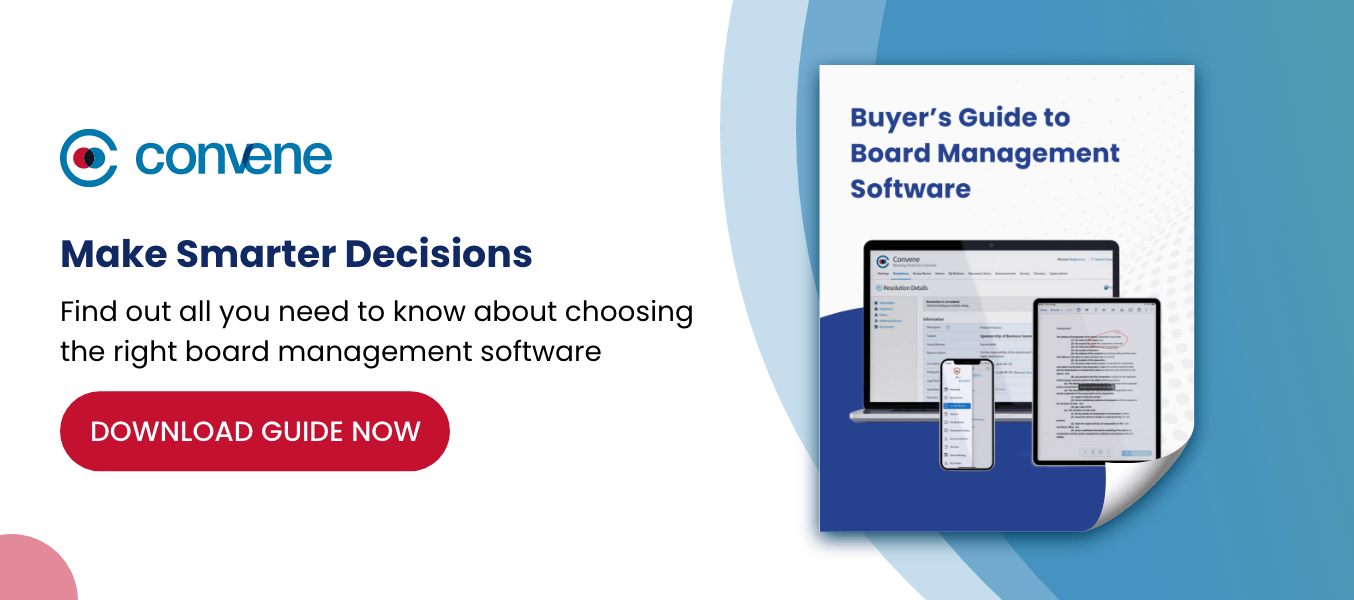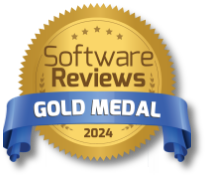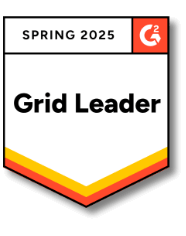Governance models have been used by both small organizations and large corporations for executing governance responsibilities. They do so by clarifying reporting lines, providing mechanisms for decision-making, identifying risks, and defining roles and responsibilities, and limits of authority. With the right model, a company and its board can effectively boost their capabilities to implement governance and conduct a more active oversight.
In this guide, we’ll explore why is governance important, what are the types of corporate governance models, and how to implement them successfully.
What is a governance model?
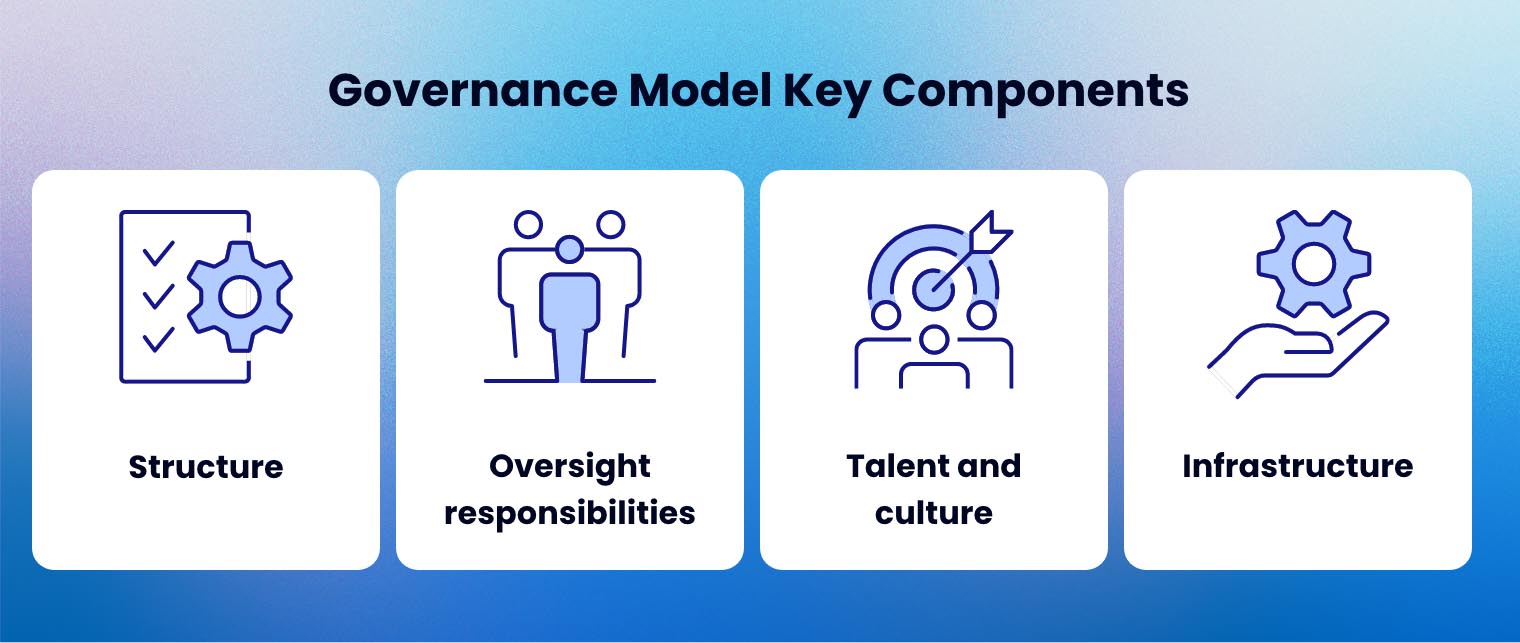
According to the Deloitte study, a governance model is a mechanism used by organizations to translate governance framework elements into practices and procedures within the corporate governance infrastructure. It provides a mechanism for managing risks, establishing decision-making procedures, and clarifying roles and responsibilities among directors, shareholders, and other stakeholders.
A strong governance model is built on key components — making up a well-functioning system. These components include:
- Structure — Involves the organization’s reporting structure, committee structures, and charters, as well as controls and supports functional interdependencies.
- Oversight responsibilities — Refers to the board oversight and responsibilities, management accountability and authority, and other accountability matrices.
- Talent and culture — Includes business and operating principles, performance measurement and management, and leadership development and talent development programs.
- Infrastructure — Encompasses the design and content of policy manuals, type and frequency of internal reporting, and technology for IT and communications support.
Why is it important for organizations?
A governance model can enable organizations to create a functional governance structure, preventing inconsistencies or gaps among the mechanisms. To put it simply, it ensures governance policies are enacted and that proper board oversight is exercised. In practice, a governance model can help:
- Organize operational, financial, and reporting processes,
- Bridge the gap between operational realities and the organization’s governance framework,
- Sustain governance by executing a feedback loop to respond to new business, operational, or regulatory needs.
Why does governance require a tailored approach?
Governance is a complex system of patterns of rule relating to the way that a business is directed. Hence, including the systems, institutions, and norms by which an organization is directed and controlled. The concept of governance therefore requires customized approaches, aligning with specific, operational, strategic, and environmental contexts.
A few factors that compel a tailored approach to governance include:
- Organizational size and complexity: Smaller organizations with simpler structures often require a more straightforward governance approach, while larger firms with more complex operations and extensive stakeholder networks call for a sophisticated framework.
- Industry and regulations: Industries like healthcare and aviation, which encounter higher operational risks, require robust governance structures to ensure safety and regulatory compliance. Nonetheless, different industries are subject to unique regulatory demands.
- Stakeholder interests: Organizations have varying stakeholder groups with distinct interests. Stakeholders in for-profit companies might prioritize financial return, while those in non-profits are more concerned with social missions. The governance approach should consider such interests are represented.
What’s the difference between governance models and governance frameworks?
While often used interchangeably, governance models and governance frameworks have distinct characteristics. In essence, a governance framework is an organization’s overarching philosophy and structure, while a governance model is the practical implementation of that philosophy.
A governance framework may act as a high-level blueprint that outlines the overall structure and approach to governance. It can also specify who has authority and accountability or define the roles and responsibilities of the board or management.
A governance model, on the other hand, the practical application of the processes and procedures outlined in the framework. It gives guidelines on how decisions are made, how information is shared, and how risks are managed. In short, it provides the infrastructure for the governance framework to function effectively. Examples include hierarchical, consensus, cooperative, and patronage models.
Seven Major Types of Corporate Governance Models
A well-chosen governance model can nurture qualities critical for the success of an organization. Hence, selecting the right model is imperative. Below are the five notable types of corporate governance models.
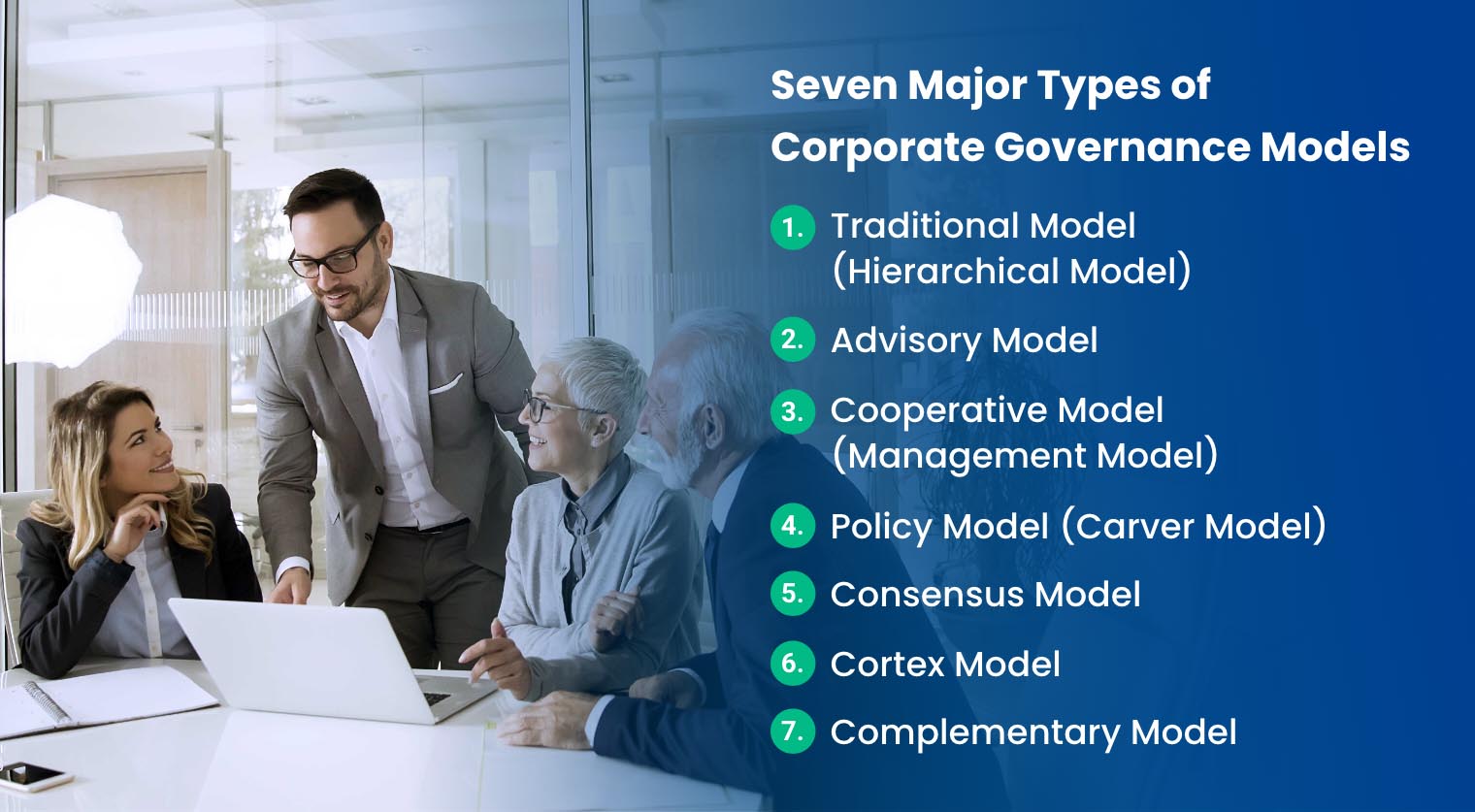
1. Traditional Model (Hierarchical Model)
Known as the oldest form of governance, the traditional model represents a clear chain of command. Under this model, the board and its functional committees have a collective responsibility for overseeing operations and setting strategic direction.
Strengths: Offers clear lines of accountability and efficient decision-making, crucial for performance and adherence to strategic goals.
Weaknesses: Its rigid structure can be inflexible and slow to adapt to change. Strict hierarchies can also create communication barriers or restrict employee or stakeholder input.
2. Advisory Model
In this governance model, the board of directors primarily acts as a sounding board for the executive team. Hence, providing expertise and guidance in improving the organization’s credibility and even its network of connections. Still, members of an advisory board usually have little decision-making power. CEOs and executives, on the other hand, retain primary responsibility for decision-making and daily operations.
Strengths: This model leverages the board’s knowledge and experience to support strategic decisions, and reduces layers of bureaucracy to enable faster decision-making compared to the traditional model.
Weaknesses: This model’s success hinges heavily on strong trust or open communication. Meaning, there’s a potential for information asymmetry if communication channels are weak — resulting in the board and executive team not getting all the details for informed decision-making and executions.
3. Cooperative Model (Management Model)
In the cooperative model, the board is actively involved in operational tasks through committees — in which each member equally makes consensual decisions. Considered as the most democratic model, there’s no hierarchy in this approach and no person has power over another. This model is often seen in small organizations or nonprofits.
Strengths: Creates a sense of shared responsibility and ownership, fosters community engagement, and promotes productivity by allowing members to use their expertise to nurture the company.
Weaknesses: Overly involved members might encroach on management’s authority, which then leads to confusion about roles and responsibilities. And in some cases, other members might need additional training or experience to effectively contribute to operational tasks.
4. Policy Model (Carver Model)
Developed by John Carver (author of Boards that Make a Difference), the policy model focuses on the board’s role in setting clear, extensive policies (e.g. financial reporting, risk management, ethics). Under this model, the board and the CEO work closely together as a team, as there’s rarely a standing committee in place.
Strengths: There are clearly defined policies to promote transparency, and emphasis on strong ethical policies to mitigate potential misconduct.
Weaknesses: Overly prescriptive policies might hinder management’s flexibility and lead to micromanagement of operations. The model’s implementation also requires strong oversight capabilities.
5. Consensus Model
Also known as the process model, the consensus model provides board members with equal votes, liabilities, and responsibilities. This type is best suited for smaller organizations, where shared decision-making is a core value.
Strengths: Offers inclusivity and ownership of decisions as this model fosters a sense of shared responsibility among board members.
Weaknesses: There’s a potential for conflict and slow decision-making. Discussions and agreements can be time-consuming, and reaching a consensus might be taxing for complex issues.
6. Cortex Model
Labeled as a community-centric approach, the Cortex Model focuses on the value an organization brings to the community, making it an ideal choice for nonprofits. The role of the board is to set the standards and performance outcomes that align with the company’s goal.
Strengths: Encourages active participation from stakeholders and promotes open communication and interconnected community — hence, creating a more participatory and inclusive environment.
Weaknesses: Collective decision-making can be time-consuming, and diverse perspectives can lead to conflicts or disagreements.
7. Complementary Model
Primarily used by nonprofit organizations and associations with volunteer boards, this guides in establishing clear guidelines on the roles of that volunteer board and paid staff. The Complementary Model integrates principles from other models to create a balanced approach delineating responsibilities between governance and management.
Strengths: The model encourages collaborative leadership and promotes flexibility in management by combining various governance principles.
Weaknesses: When not properly planned or executed, having a cohesive functioning among different governance elements can be challenging.
Steps to Implementing an Effective Governance Model
Once you’ve chosen the governance model you’ll be using, it’s crucial to have an implementation plan on hand. To help you with this, here are some key steps for you to follow:

1. Define your governance model requirements
Before anything else, it’s imperative to first determine the scope of governance needed. Consider factors such as domestic or global operations, specific business lines, and existing or planned products and processes.
You’d then need to check on useful governance models that best fit your organization’s needs. Don’t forget to also review all regulatory and governance requirements specific to your industry and geographic location.
Additionally, it’s vital to conduct a governance maturity assessment to assess the organization’s current capabilities and examine the governance structures of peers through publicly available documents. Doing so can help you identify every governance needs and activities you’ll have to prioritize.
2. Design the governance model components
Next, develop a change-management plan, outlining the necessary attitudinal and behavioral changes required for the implementation. It would also be helpful to create a desired governance structure for operations and control functions, including risk management, legal, finance, audit, HR, and compliance.
As to ensure everyone knows their responsibilities, it’s advisable to develop a matrix that defines their key responsibilities. Only after this, you can start designing the components of the governance model you’ll be using. Some of the components to take into account are:
- Hierarchy and reporting lines
- Policy framework and Standard Operating Procedures (SOPs)
- Decision rights and escalation paths
- KPIs and performance reviews of governance bodies and roles
- Communication audits and regulatory liaison
- Training programs (initial and ongoing)
3. Create the implementation plan
In developing the actual implementation plan, begin with the standards and metrics for measuring success. These can include regulatory compliance rate, risk mitigation effectiveness, incident response time, decision accuracy, resource utilization, and stakeholder satisfaction score.
Moreover, ensure that resources are allocated and deployed strategically. Prioritize critical areas such as legal and compliance, change management, audit and evaluation. You can opt to create a visual implementation plan in order to track progress, log risks, and manage any issues efficiently. You may also acquire external assistance to create the plan and oversee implementation.
4. Establish a monitoring and evaluation process
Last but not least, monitor the progress of the governance model implementation. Schedule regular internal and external audits to ensure compliance and unbiased evaluation. You’d also want to get feedback from your stakeholders for determining areas needing improvement. This can be done through surveys, interviews, or focus groups. If you want a continuous feedback mechanism, consider having suggestion boxes and online submission platforms.
Establish a Strong Governance Model with Convene
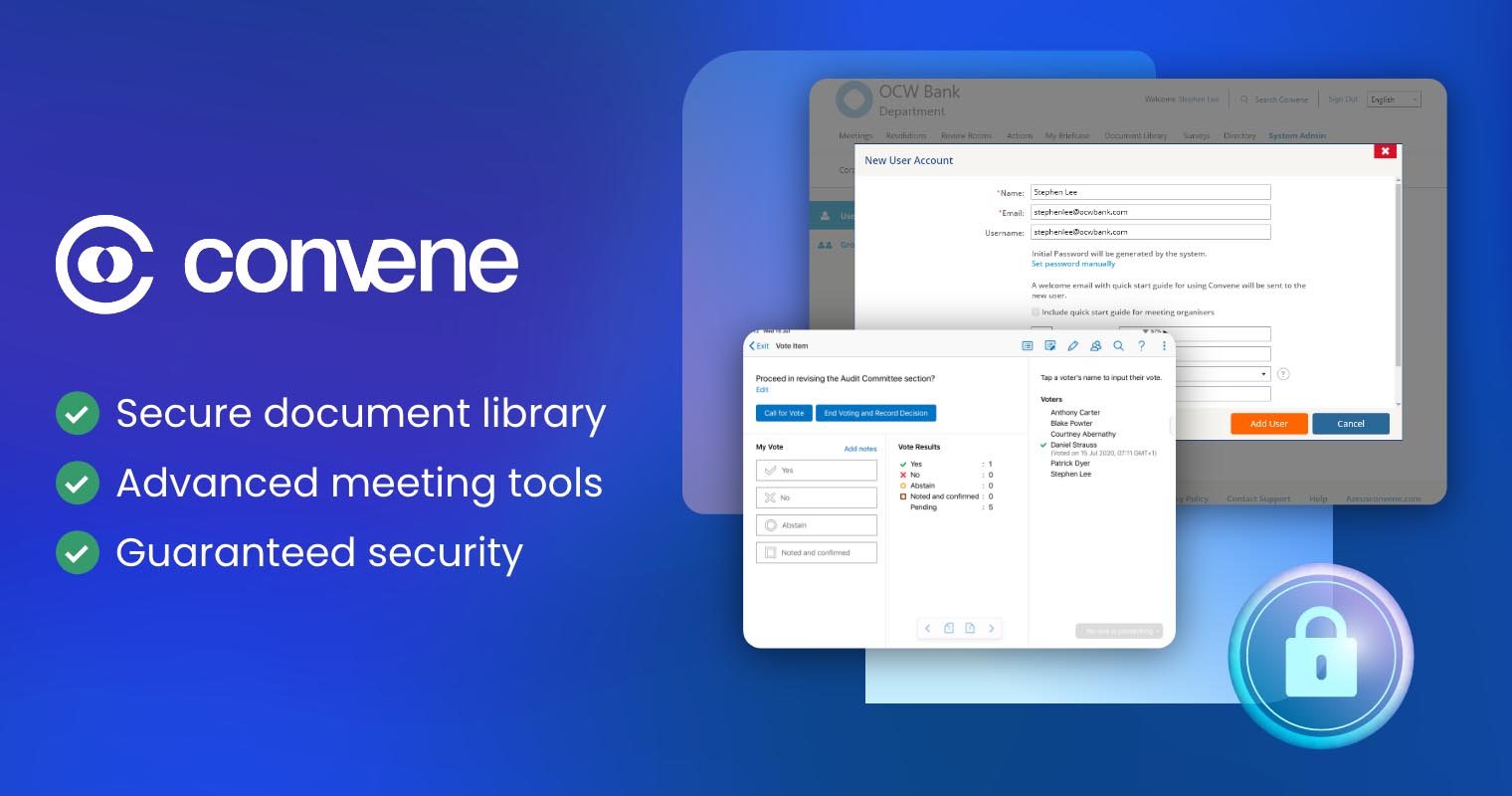
A strong governance approach fosters ethical practices and effective decision-making — all vital aspects for long-term organizational success. However, navigating the complexities of establishing and maintaining good governance can be taxing. This is where board portal software like Convene steps in as your invaluable governance partner.
Convene is a nonprofit board management software designed to empower organizations and their boards to streamline collaboration, decision-making, and most importantly, build a robust governance framework. Among its suite of features are:
- Secure document library for board materials, meeting minutes, and key governance documents, ensuring boards have easy access to critical data for informed decision-making.
- Advanced meeting tools for easy yet efficient collaboration of board members, committees, and executive teams, from voting to reviewing resolutions.
- Guaranteed security for meeting regulatory requirements and compliance policies. Security features available are multi-level encryption for documents, role-based access control and secure user authentication, and user logs and activities.
Want to know more about Convene’s features and why it’s the best software for your governance needs? Book a demo with our team today!
Jielynne is a Content Marketing Writer at Convene. With over six years of professional writing experience, she has worked with several SEO and digital marketing agencies, both local and international. She strives in crafting clear marketing copies and creative content for various platforms of Convene, such as the website and social media. Jielynne displays a decided lack of knowledge about football and calculus, but proudly aces in literary arts and corporate governance.


